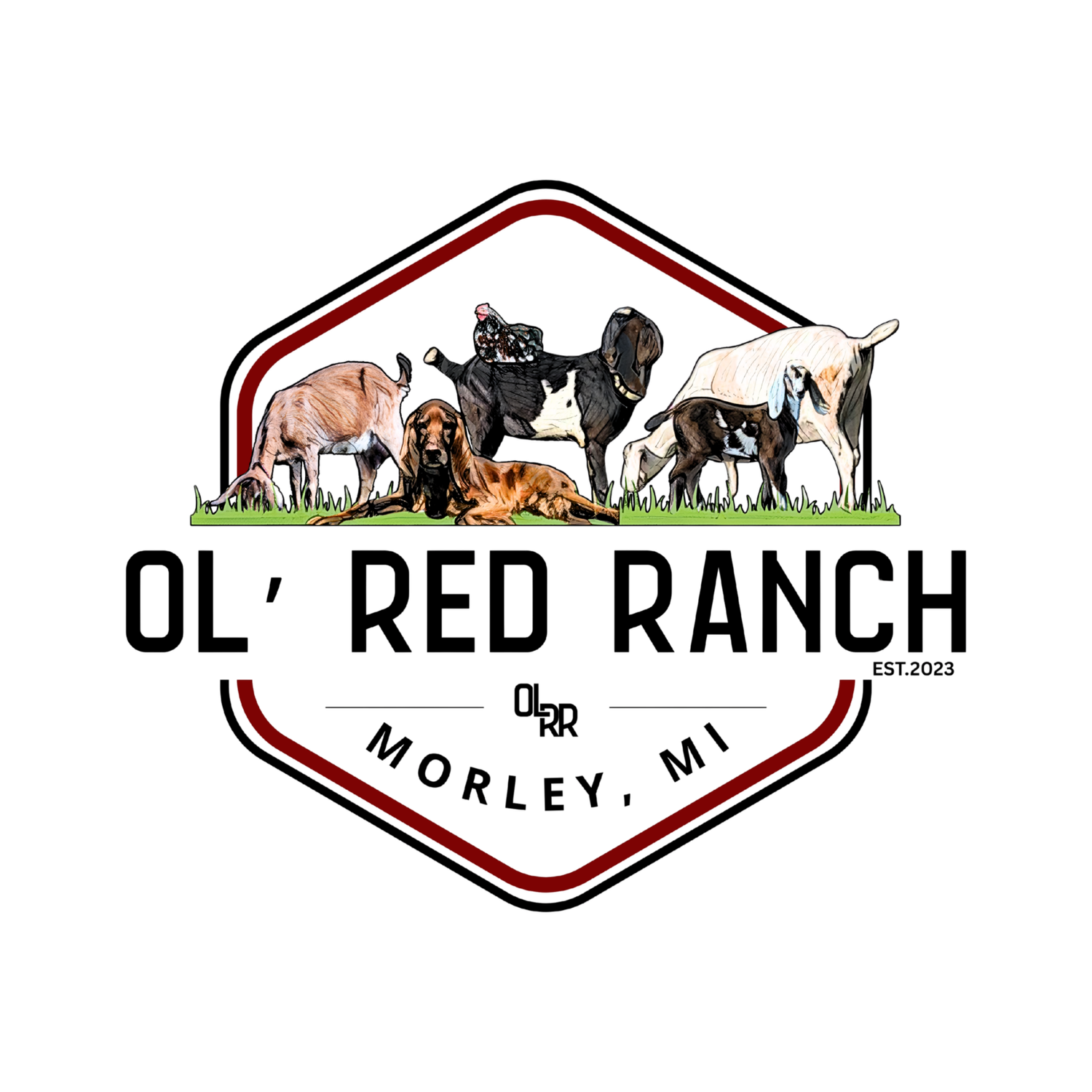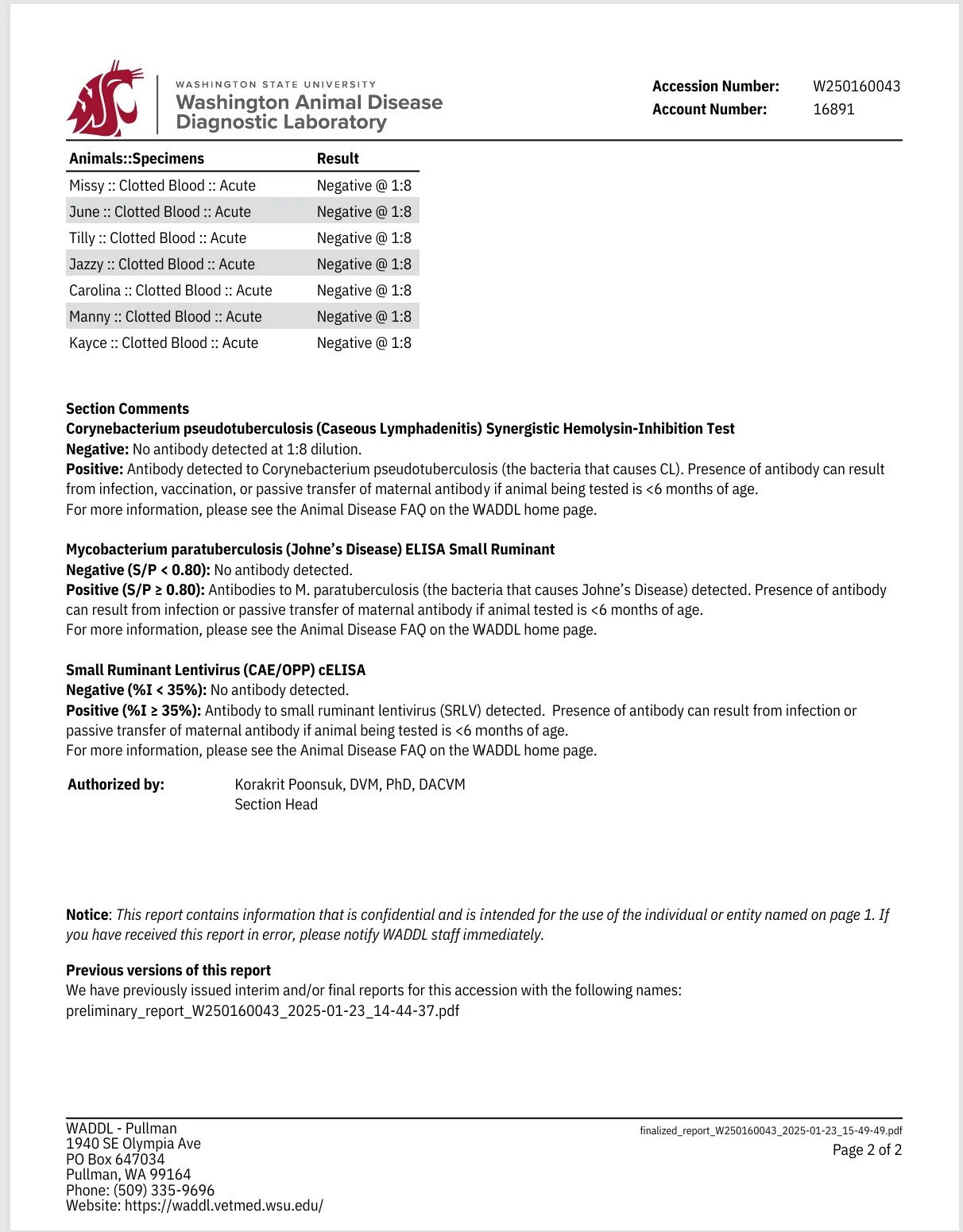Herd Biosecurity.
Biosecurity refers to the practices put in place to protect your herd from diseases and maintain a healthy, productive environment. In dairy goats, this includes careful management of animals, equipment, and visitors to prevent the introduction or spread of contagious diseases. Through strict protocols and annual testing we are able to keep a healthy herd. We are happy to let you know that our herd tests negative for Johne’s and CAE, and is CL abscess free!
FAQs
-
Johne’s, CAE, and CL (Only if an abscess is present)
-
Johne’s disease, also known as paratuberculosis, is a contagious and ultimately fatal gastrointestinal disease that affects goats, sheep, and other ruminants. It is caused by the bacterium Mycobacterium avium subspecies paratuberculosis (MAP). Young animals are especially vulnerable, and once infected, they can carry and spread the disease long before showing symptoms.
The primary route of transmission is fecal-to-oral—when animals ingest feed, water, or bedding contaminated with the feces of an infected animal. It can also be passed from mother to offspring through the placenta, milk, or colostrum.
There is no cure for Johne’s disease, making prevention through testing and strict biosecurity practices critical.
-
CAE is an acronym for Caprine Arthritis Encephalitis. CAE is caused by a small ruminant lentivirus (SRLV), a group of viruses known to cause chronic, progressive disease in multiple organ systems. In goats, the most common route of transmission is through infected colostrum or milk. However, the virus can also spread through close contact with infected animals and exposure to contaminated blood via shared needles, dehorning tools, or open wounds.
CAE can affect goats of any age. In kids under six months, the virus may cause encephalomyelitis, leading to symptoms such as weakness in the hind end, incoordination, and eventually paralysis. In adult goats, CAE often presents as chronic joint disease, with signs including stiffness, lameness, reluctance to move, walking on knees, swollen or painful joints, and an abnormal gait or posture. Other symptoms may include weight loss, a hard or swollen udder (without milk production), and respiratory issues such as coughing or labored breathing.
There is no cure for CAE, so prevention through testing, separating kids from infected dams at birth, and practicing strict biosecurity is essential to maintaining a healthy herd.
-
CL is an acronym for Caseous Lymphaditis. CL is caused by the bacterium Corynebacterium pseudotuberculosis and presents as abscesses, typically around the lymph nodes. It is highly contagious and spreads when abscesses rupture, contaminating surfaces, soil, feed, or other animals. It can also be transmitted through shared equipment or open wounds.
Although we have never had any abscesses in our herd, we have a protocol to follow if one were to form.
-
We run annual biosecurity testing, usually in January before kidding season begins.
We submit blood samples from each goat for individual CAE tests.
We submit fecal samples from each goat for Johne’s testing via PCR.
For CL, we occasionally send in blood samples just to confirm our negative status. But the best way to rule out CL in your herd is culturing any abscesses that present themselves.
-
Any additions to our herd are tested for Johne’s and CAE before physically integrating them into our herd.
We pull kids at birth and raise them on heat treated
2025 Biosecurity Testing Results




